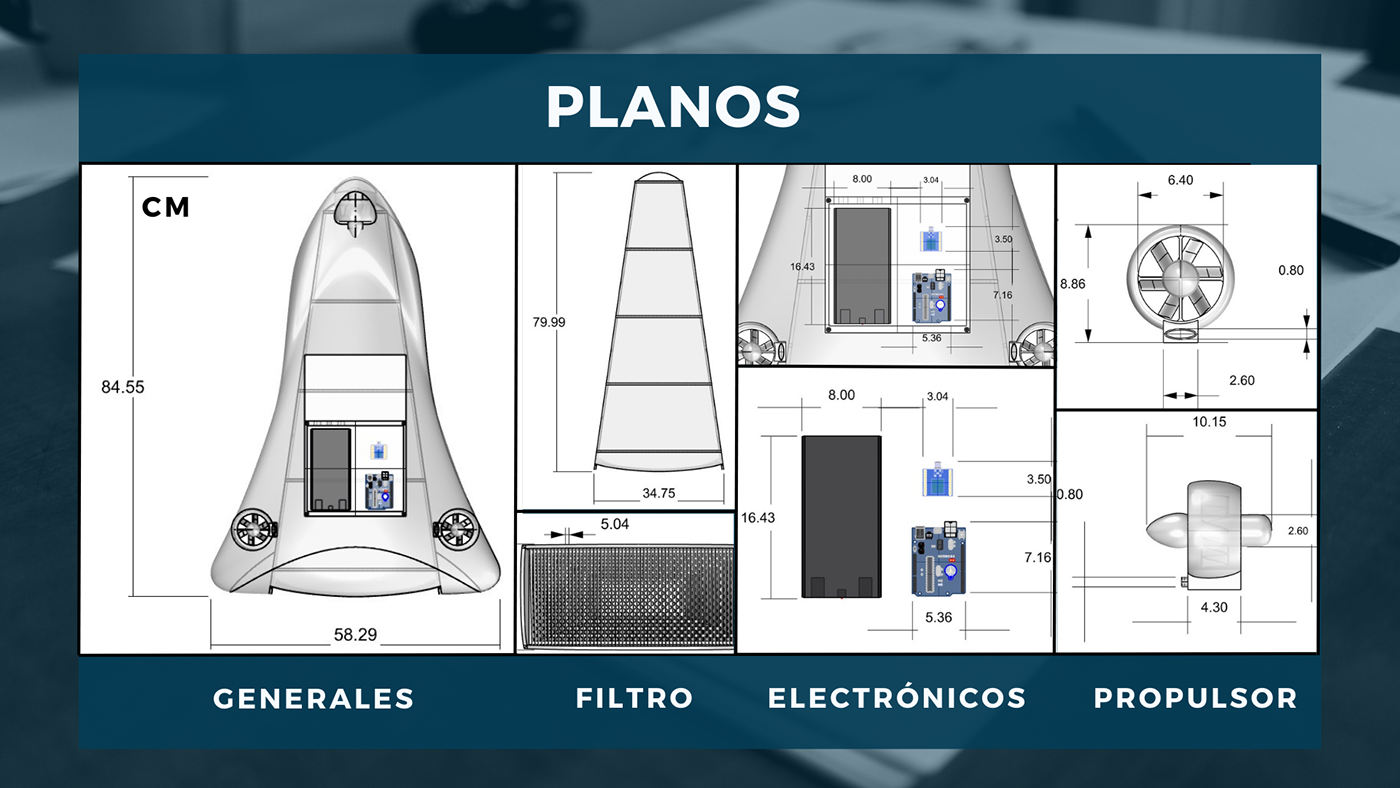
BOBBY WHALE - PlasticDetect DiveDrone (2023)
Drone Design Concept
Designers: Sofía Díaz - Aline Patrón - Marla Orozco - Fernando Esparza
Drone Design Concept
Designers: Sofía Díaz - Aline Patrón - Marla Orozco - Fernando Esparza

Según un informe de National Geographic (2022), científicos de Europa han descubierto la presencia de microplásticos (MP) en los pulmones de pacientes y donantes de sangre. Las expediciones destinadas a contabilizar MP en los océanos revelan cifras inexactas, pasando por alto el impacto ambiental y de salud que obstaculiza la implementación de medidas efectivas de mitigación.
DESCONOCIMIENTO
El conocimiento insuficiente sobre la cantidad de microplásticos en el agua limita nuestra comprensión de su impacto ambiental y la formulación de medidas eficaces de mitigación.
CONOCIMIENTO
Determinar la cantidad de microplásticos a cierta profundidad en el mar permitirá una gestión más precisa y efectiva de la contaminación marina y la conservación de ecosistemas submarinos.
According to a report from National Geographic (2022), scientists in Europe have discovered the presence of microplastics (MP) in the lungs of patients and blood donors. Expeditions aimed at quantifying MP in the oceans reveal inaccurate figures, overlooking the environmental and health impact that hinders the implementation of effective mitigation measures.
LACK OF AWARENESS
Insufficient knowledge about the amount of microplastics in water limits our understanding of their environmental impact and the formulation of effective mitigation measures.
KNOWLEDGE
Determining the quantity of microplastics at certain depths in the sea will allow for more precise and effective management of marine pollution and the conservation of underwater ecosystems.

We are aware that microplastics pose a current problem; however, we lack a clear approach to address this situation, as, up to this point, an effective method has not been developed to determine the location of microplastics.
Optimizing the sampling of microplastics at various depths and classifying them according to their size with the aim of mapping areas with a higher probability of microplastic presence.





"Bobby", replica el mecanismo de la ballena, utilizando barbas para contener y clasificar los MP a través de un sistema de mallas cribadoras de diferentes granulometrías, asegurando que el agua regrese al océano libre de micropartículas.
"Bobby" replicates the mechanism of a whale, using baleen to capture and classify microplastics through a system of mesh screens of varying granularities, ensuring that the water returns to the ocean free of microparticles.
"Bobby" replicates the mechanism of a whale, using baleen to capture and classify microplastics through a system of mesh screens of varying granularities, ensuring that the water returns to the ocean free of microparticles.



RECOLECCIÓN
Bobby se sumerge hasta 100 metros bajo el agua con una velocidad de 3 nudos para recolectar MP de un área específica.
SEPARACIÓN
Su filtración inspirada en las barbas de la ballena “come” los microplasticos y los separa por tamaño.
MUESTREO
Se analizan las muestras de los MP y se clasifican.
MUESTREO
Se analizan las muestras de los MP y se clasifican.

CHECK OUT THE INVESTIGTION BEHIND THE PROJECT:
https://docs.google.com/document/d/1eZsZdfqI8fzlDtfW2xgxFDUivh3L_KJJNwjf0vXhLAk/edit?usp=sharing
https://docs.google.com/document/d/1eZsZdfqI8fzlDtfW2xgxFDUivh3L_KJJNwjf0vXhLAk/edit?usp=sharing
https://www.canva.com/design/DAFttIPEE3E/sCJLWIgmRt4na2gFjCm6gw/edit?utm_content=DAFttIPEE3E&utm_campaign=designshare&utm_medium=link2&utm_source=sharebutton
